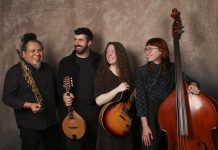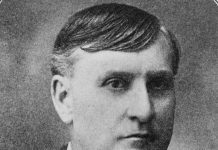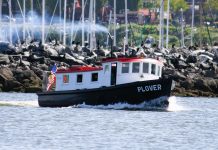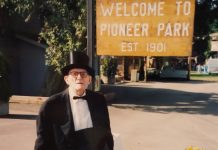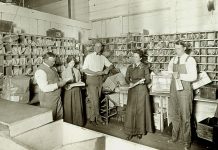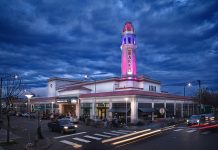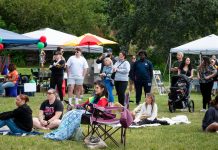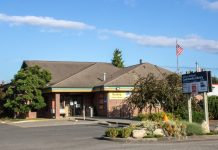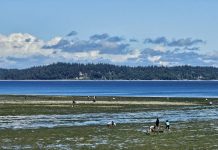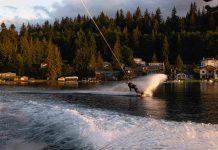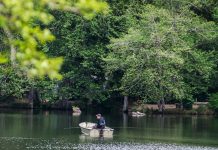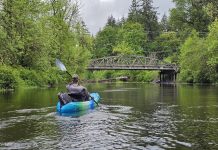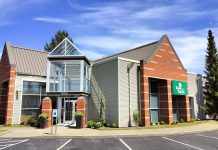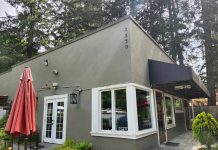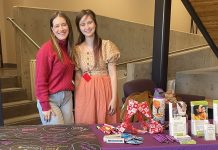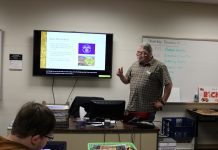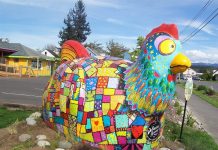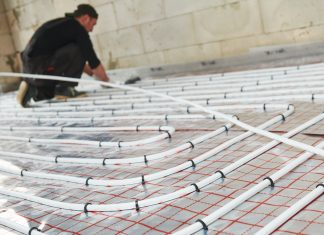More than any other annual Whatcom County event, the Northwest Washington Fair brings together thousands of people from all walks of life. From elephant ears and Ferris wheel rides to prized livestock and live concerts, the fair’s Lynden location has become synonymous with great memories and the fading warmth of summer nights.
But the fair wasn’t always in Lynden, and its history is one full of both agriculture and pop culture.
Much of the following information is sourced from the fair’s official 2010 retrospective, “100 Years at the Northwest Washington Fair,” written by Sarah Eden Wallace. The book is well-worth seeking out, and contains great photography, fun stories, and even some tasty recipes.
Humble Beginnings
As far back as the mid-1870s, fairs were held in the area that would later become Bellingham.
From 1894 to 1895, the Grand Central Hotel — at the corner North Forest and East Holly Streets — held county fair exhibits at what’s now the location of the Community Food Co-op. Annual fair festivities also took place on what’s now industrial land near modern-day Kentucky and Iowa Streets.

The genesis of a Lynden-based fair can be traced to October 16, 1909, when a two-day street fair took place along Front Street. Known as the Nooksack Valley Produce Fair, the popularity of the event led to the formation of a Whatcom County Fair Association in 1911, with formal plans for a fall fair.
The association bought 20 acres of land bordering Front Street at a cost of $1,600. Half the purchasing money was comprised of an estate loan, while the rest was cobbled together from selling $25 nonprofit stock shares in the fair association. By August, the association was still $600 in debt, beginning a long pattern of financial strife.
Held from October 17 to 20, 1911, the first Lynden fair attracted 9,400 people. Subsequent fall fairs resulted in fairgrounds improvements, and events included baseball games, high school football games, kite-flying, and baby contests, as well as horse, motorcycle, and automobile races.
Barnstorming aviators visited the fair in the 1920s and were invited to land on the infield of the fairgrounds racetrack. The half-mile track, which even once hosted ostrich races, was finally removed in 1991; carnival rides now occupy its former location during the fair.

In 1920, Burlington’s Barney Barnett flew his Curtiss Jenny biplane to Lynden, where 21-year-old Syl Weidkamp engaged in wing-walking stunts without any safety equipment. The duo then stuffed a pair of overalls with straw and threw it out of the plane, allegedly horrifying spectators and local law enforcement gathered below.
In 1922, the event and its association became known as the Northwest Washington Fair. Through 1941, the fair was held in either October or September.
Struggles Aplenty
As the 1920s progressed, fair attendance fell amid rising debt. In 1928, stockholders voted to transfer the fair association’s assets to Whatcom County.
Once the Great Depression took hold in the 1930s, things got worse. A smaller three-day agricultural fair replaced the NW Washington Fair from 1931 to ’33 and, in 1932, the fair’s main grandstand burned to the ground. Because of continuing financial issues, it took seven years to be replaced.

By March 1934, the fair was on the brink of foreclosure. Its board of directors met with local business owners that month in Bellingham, where Lynden Tribune publisher Sol Lewis encouraged the city of Lynden to rally around the fair’s financial woes.
Foreclosure was avoided, and support from prominent residents like Peoples Bank’s Irwin LeCocq, Sr. helped the fair weather the financial storm. In order to rebuild its grandstand, the privately-held fair needed federal financial aid, for which it was not eligible. To get around this, the fairgrounds were quit-claimed to the City of Lynden, paving the way for $32,000 in Public Works Administration funding.
From 1942 to 1945, no fair was held during World War II, and the fairgrounds were approved as a war disaster center for the Red Cross and civil defense. The fair resumed in August 1946 with the largest livestock show in its history, but by 1949 found itself in debt to the tune of $12,000 ($153,000 today).
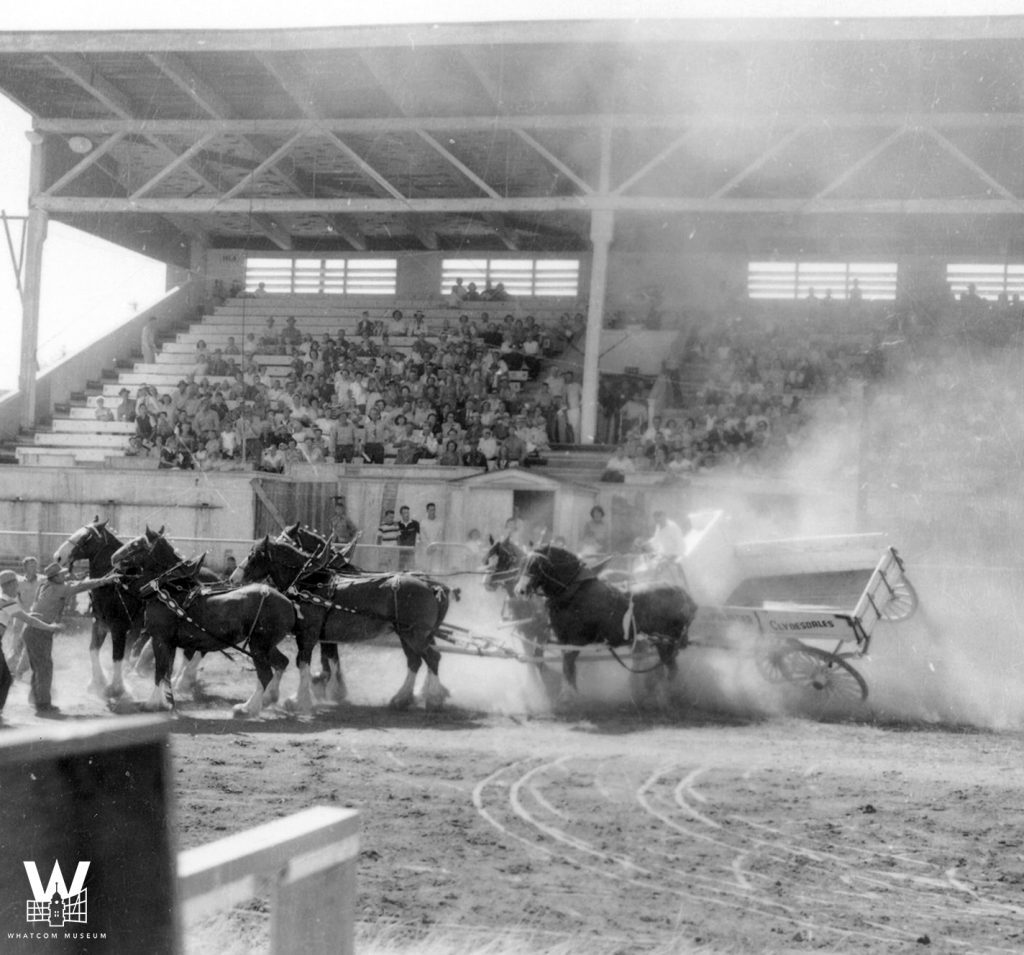
Taking personal financial risk, seven board members each spent $1,700 of their own money ($21,700 today) to keep the fair going. Within a year, they’d all been repaid. In 1952, the fair’s assets were again transferred to Whatcom County, making the Lynden Fair a county-operated event for the next four decades. While technically city-owned during that time, the fairgrounds were cheaply leased each year to the county to put on the fair.
Bigger Fairs, Bigger Names
In 1955, the fair expanded from three days to four, and attendance continued to increase. By the mid-1960s, discussions about moving the fairgrounds to acreage near Smith and Northwest Roads took place, but ultimately the fairgrounds remained where they are today.
By 1970, annual fair attendance was topping 66,000 people, with more than $22,000 in awarded premiums. The mid to late 1970s saw nearly $900,000 in facility improvements, the implementation of tractor pulls and demolition derbies, and the booking of big name music acts.
In 1974, country music star Loretta Lynn became one of the first big musical draws of the NW Washington Fair. Lynn, who spent part of her early life in Whatcom County, once won $25 in a fair talent contest for singing, and also earned 17 blue ribbons for her canning abilities. She performed at the fair again in 1982 and 1998.

Over the decades, the fair’s grandstand musical acts have brought big names in country, popular, and Christian music. Johnny Cash, Charley Pride, Roger Miller, Glenn Campbell, Toby Keith, Brad Paisley, Merle Haggard, Willie Nelson, and Trisha Yearwood are just some of the big country names to have performed.
In 1997, Garth Brooks flew into Bellingham aboard his private jet and made a surprise cameo appearance during Yearwood’s performance; it remains one of the most talked-about things to ever happen at the fair.
Other popular acts have included the Beach Boys, Doobie Brothers, Styx, Chicago, Foreigner, and Huey Lewis and the News, as well as Jars of Clay and the Newsboys.
A Long Legacy
The fairgrounds have continued to improve over the last four decades, adding more dining and exhibition spaces, as well as a fountain and clock tower.
Over the years, the location has held all manner of events, from home and garden shows to presidential rallies. Most infamously, the fairgrounds held a Ku Klux Klan demonstration in 1924. Decades later, a now-defunct county program allowed criminal offenders to trade manual labor for jail time; prisoners painted barns, set up animal pens and, most notably, shoveled animal manure.

In 1992, the fair set its all-time attendance record of 243,181 people. In 1997, its operations converted from county-run to that of a private non-profit entity. The fair currently owns the 21-acre fairgrounds, which it purchased from the city in 1997 for $250,000. Under the current agreement, the fair board forfeits the land to the city if the fair ever moves, and the city in turn agrees not to tax fair admission revenue.
After the cancellation of the fair in 2020 due to the COVID-19 pandemic, the fair returned in 2021 by expanding to 10 days of music, animals, exhibits and food. Daily attendance now ranges well beyond the early years’ annual attendance numbers.
Whether you go for the Moowiches and poffertjies or the carnival games and exhibits, attending the fair is a cherished part of Whatcom County living.
Despite the vast transformation of daily life in the last 110 years, enjoying a day at the fair is one thing that’s never changed.





